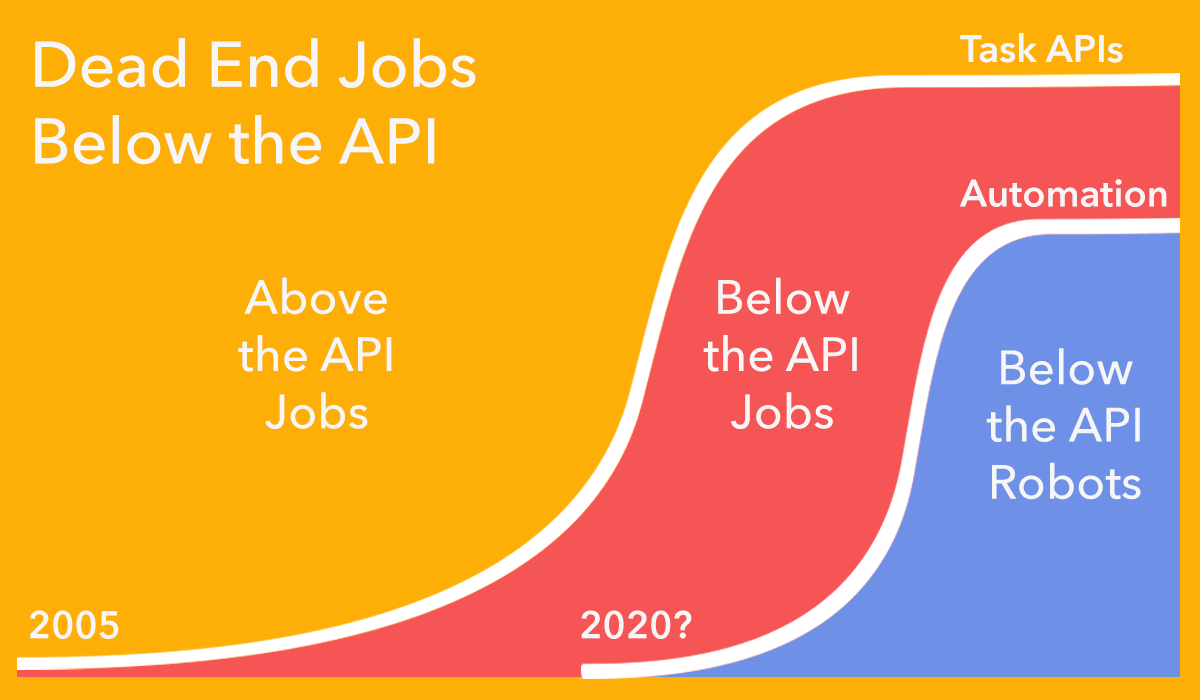An Automatter Brain Dump
"It's just that bird law in this country—it's not governed by reason."
Hey guys - trying out something new this week. Jeremy and I both have a lot going on and knew we wouldn’t have the time to write a full fledged article. Instead, we’re dropping the first ever Automatter Brain Dump wherein I share what I’m reading, bookmarking, and thinking about this week. Read on if you dare!
What I’m Reading This Week:
When physical automation became popular in the mid 1900s, there was a general anxiety amongst laborers that it would eliminate their jobs. In this article, Bessen reveals that quite the opposite has happened; in fact, the only occupation that has been completely eliminated from the US Census since 1950 is “elevator operator.” Instead, the majority of jobs have been partially automated which has actually increased the need for workers in those sectors. Bessen explains:
“This distinction is important because it implies very different economic outcomes. If a job is completely automated, then automation necessarily reduces employment. But if a job is only partially automated, employment might actually increase. This is true even if the job is mostly automated. The reason has to do with basic economics. For example, during the 19th century, 98% of the labour required to weave a yard of cloth was automated, yet the number of weaving jobs actually increased (Bessen 2015). Automation drove the price of cloth down, increasing the highly elastic demand, resulting in net job growth despite the labour saving technology.”
“The cost of contract complexity” by Bill Mooz & Paula Doyle
I’m obsessed with talking about inefficiencies within legal (and financial) institutions. It’s a big part of the reason why I’m such a big fan of Chris Harvey. Through his Substack, Law of VC, Chris has highlighted the reasons why lawyers resist technology; lawyers make money by the billable hour, so they aren’t incentivized to work more efficiently.
This week, I came across a piece that lays out the true economic costs of the legal system’s over complex approach to contracts. Here’s a blurb that might grab your attention:
“...even with minor improvements to our horribly inefficient contracting process, global GDP in 2019 likely would have exceeded $90 Trillion. Now would be a good time for the world to have access to an additional $2.5 Trillion.”
The authors suggest a three-pronged solution to reducing contract complexity: Software, Services, and Standards. As I previously mentioned, legal software is often met with resistance and services are, of course, costly. But I’m excited by the suggestion of “standards,” which immediately brings to mind the YC SAFE. But it also highlights the value of standardized processes, which is applicable both in and out of the legal context. To quote the article:
“Standards that get used on a repeated basis become familiar to people in the relevant industry, making them easy for those administering a contract to understand and work under. When a standard achieves sufficient adoption, companies can even align their business systems and practices to it.”
If you’re interested in reading further on this subject, I’d recommend Chris’ piece on Building a Legal Autopia and throwing Alex Su a follow on Twitter.
“Replacing Middle Management with APIs” by Peter Reinhardt
“As the software layer gets thicker, the gap between Below the API jobs and Above the API jobs widens. And economic incentives will push Above the API engineers to automate the jobs Below the API: self-driving cars and drone delivery are certainly on the way. The gap in training and social groups above and below could mean that new automation technology causes sudden, large-scale unemployment and a surge in demand for subsidized training. I hope we’re ready.”

Tweets I Bookmarked this Week:




What I’m Excited About This Week:
Next week, we’re hosting a fireside chat with Yohei Nakajima, Founder and GP at Untapped VC. Yohei is the embodiment of everything we celebrate here at Automatter. He’s a no-code automation genius and is changing the “warm intro” paradigm of VC by prioritizing outbound activity. If you’re interested in attending the fireside, you can fill out our interest form here.
On Monday, I had a chance to talk to one of my favorite writers, Anne Helen Peterson, about the tech industry’s obsession with frictionlessness for a piece she’s writing. Stay tuned!
On Tuesday, Olympian Des Linden set a seven minute world record by running the 50K in 2:59:54 (or 5:47 per mile for ~31 miles). I know this one came out of left field, but it deserves celebrating.
Our friends at BuiltFirst did a slick rebrand and came out of beta! If you’re a VC who isn’t offering your portcos software and vendor discounts in partnership with BuiltFirst, you are failing them.
I got a sneak peak at a piece Jay Drain Jr (Associate at Maven Ventures) is writing on retailing investing 3.0. The piece is incredibly insightful and Jay has the most enjoyable writing style I’ve read in a while. I’ll be sure to share the final version when he publishes it!
That’s all for now. While it might not be the reason why you originally subscribed to Automatter, I hope you enjoyed hearing about what I’m excited about this week. If you did, I’d love to hear from your via email or on Twitter. And if not, I can assure you we’ll be back to our regularly scheduled programming next week!
— HKA




